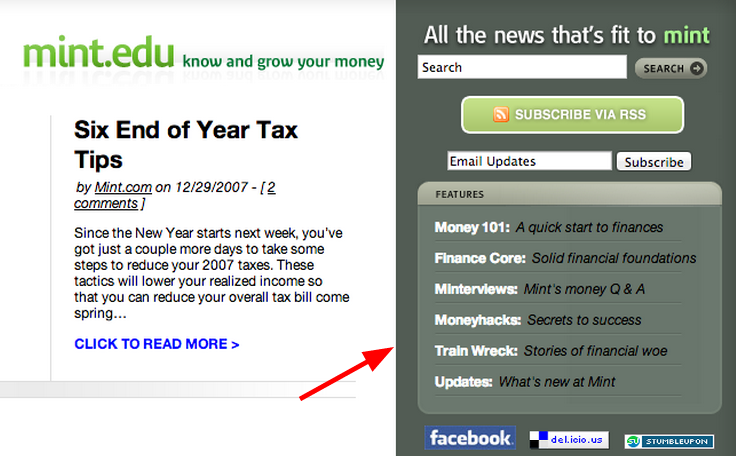MintLife Blog_1
Post on: 1 Август, 2015 No Comment

How much are you paying in your 401(k)? Probably more than you think.
The typical fees and charges assessed against the average 401(k) investor can be much higher than those of equivalent investments available outside a sponsored retirement plan. The problem is, 401(k) fees can be difficult to track down and compare to alternatives. (When you invest on your own, on the other hand, you can and should comparison-shop different expense structures and brokerage fees. To lean more about finding the lowest brokerage commissions, watch this video at Learning Markets. )
Dont take 401(k) expenses lightly. It is very important to understand that these fees can make a material impact on your overall investing success. For example, an investor with a $10,000 account who pays a 1% sales charge and 3% in total annual expenses over a 20 year period will have $36,217.93 assuming a 10% annual rate of return. An investor who used ultra low-cost index funds or ETFs and paid no loads and a 0.2% annual expense ratio would have $64,634.52.
Before we launch into discussing 401(k) costs, gather some paperwork from your plan and compare the numbers. You will need your mutual funds prospectuses and your 401(k) plans annual report. You may even have to resort to a few phone calls to the plan administrator and mutual fund companies to gather all the information you need.
Fund Expenses
Mutual funds require maintenance and management. The firm offering the fund will charge an expense to its investors to cover these costs plus a profit margin. This is often called the funds expense ratio. A typical low-cost index mutual fund will have an expense ratio less than 1%. There are some great index funds that charge 0.2% in an annual expense ratio. (You can learn how to find and invest in fund that offer these kinds of low fees in this video at Learning Markets. )
There are several popular classes of mutual funds, including some actively managed funds, that will charge much higher annual fees. This is not a case of getting what you pay for. There is no evidence that investors who pay high fees outperform those who pay low fees. In fact, there is evidence to the contrary. It is not unusual for an actively managed fund to charge 3% or more. This means that if you had $10,000 invested in your 401(k), you are paying $300 per year in management expenses.
You can find a funds expense ratio in its prospectus. This number is usually included in Annual Fund Operating Expenses section. If you cant find it, call the company and have them show you where it is. Chances are that the harder it is to find, the higher it is.
Administrative Costs
A 401(k) plan can be expensive to administer. The company you work for is responsible for those costs and may be passing them on to you. Finding these fees can be tricky but it is usually included in the annual report you receive at the end of the year. You will need to divide the total asset value of the plan into the net expenses as shown in the end of year statement to arrive at an expense ratio for this component of your 401(k) costs.
This portion of your accounts expenses could be as much as the expense ratio charged by the funds within the plan. That means that a 1% administration cost ratio could be costing you $100 a year if you had $10,000 invested in your 401(k).
In fact, the Wall Street Journal reported recently that many firms have learned lately that they can make so much money from your 401(k) that they will even try to keep you as a “customer” long after you’ve left as an employee.
Commissions, or Loads
What happens if you decide to leave one fund within your 401(k) and buy a different one? Are you charged for that? Sometimes the answer is yes. Charges associated with buying a fund, as well as selling one, are usually called loads.

A fund with a front-end load will charge you to buy the fund in the first place. This fee could be 3%-8%, which could make a serious impact on your overall performance. In a $10,000 account a 3% front-end load would cost you $300. Those are high fees just for the privilege of buying the fund.
Back-end loads, or selling charges, can be equally damaging to your portfolios value. These fees are triggered when you exit a fund. Sometimes, a fund will reduce this fee the longer you hold the fund, however, if you sell in the short term a big fee could be assessed.
Loads are usually listed in the Shareholder Fees section of a funds prospectus.
There is a spectrum of additional costs that may be even more difficult to spot. For example, a fund that charges a 12b-1 fee may be charging the costs of marketing the fund back to its investors; or a redemption fee may be charged to you if you buy and then sell a fund within the plan very quickly. The list of other expenses could also include account fees for small accounts, exchange fees for switching funds within the same group or kickbacks between the fund company and the plan administrator.
These fees are usually but not always included in the Shareholder Fees section of the prospectus.
One resource that can do a lot of this fact-finding for you is BrightScope.com, which has rated more than 30,000 401(k) plans on a number of criteria, including expenses. You can compare your plan to other plans in your industry.
There are very few things that you as an investor can actually control, but you can definitely influence costs. But before you can make changes you have to know what you are paying. Finding out may take some effort but the end result may change your attitude about your 401(k) and the future direction of your investing.














